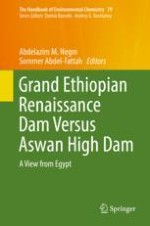2019 | OriginalPaper | Buchkapitel
Importance of Aswan High Dam to Egypt
verfasst von : Nader Noureldeen Mohamed
Erschienen in: Grand Ethiopian Renaissance Dam Versus Aswan High Dam
Aktivieren Sie unsere intelligente Suche, um passende Fachinhalte oder Patente zu finden.
Wählen Sie Textabschnitte aus um mit Künstlicher Intelligenz passenden Patente zu finden. powered by
Markieren Sie Textabschnitte, um KI-gestützt weitere passende Inhalte zu finden. powered by
